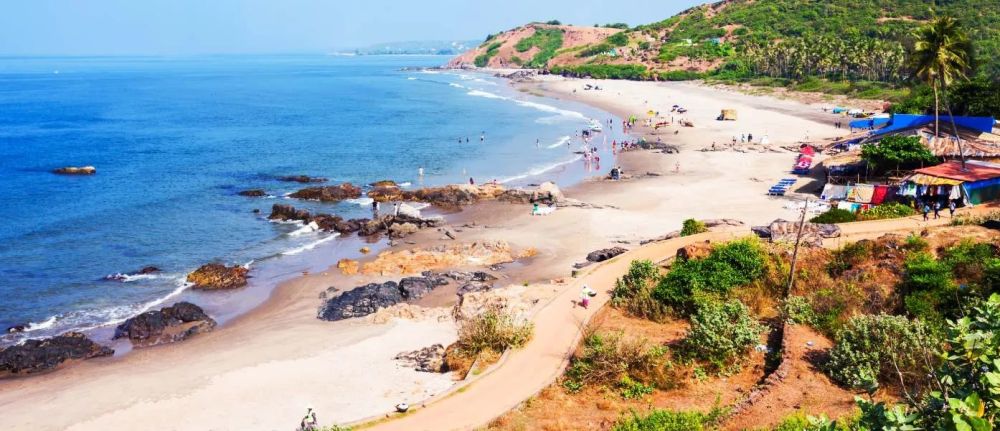

Anjuna Beach, located in the northern part of Goa, has long been a haven for tourists seeking both serenity and excitement. The history of tourism in Anjuna is as colorful as the destination itself, with its sandy shores and swaying palms setting the stage for a vibrant visitor experience through the decades.
The inception of Anjuna Beach as a tourism hotspot dates back to the mid-20th century. Initially a tranquil fishermen's village, its scenic charm began to draw visitors from afar. This coincided with the rise of the hippie movement in the 1960s and 70s, when Westerners seeking alternative lifestyles found solace in Anjuna's laid-back environment.
Anjuna's Wednesday Flea Market, started by the hippies as a means of bartering goods, transformed into a cultural phenomenon and began attracting more tourists. The market still stands today as a testimony to Anjuna's integration with tourism.
The 1980s and 90s marked a significant turning point for Anjuna Beach. It became synonymous with Goa’s burgeoning rave culture. Parties held under the moonlit sky, with trance music setting the rhythm of the waves, propelled Anjuna to legendary status within the global rave community. While the rave scene has been curtailed due to regulations, the spirit of that era continues to infuse the nightlife in Anjuna.
In the 21st century, Anjuna Beach has evolved into a more diverse tourist destination. While it retains its bohemian charm, the area now boasts a variety of accommodation options, ranging from budget guesthouses to upscale resorts. Eco-tourism and wellness have become significant draws, with yoga retreats and natural therapy centers popping up along the coastline.
Recognizing the increasing demand for more than just relaxation, Anjuna has diversified its offerings to include water sports and adventure activities. Today, visitors can partake in parasailing, jet skiing, and windsurfing, to name a few.
Gastronomy tourism has also grown, with visitors flocking to Anjuna for both its traditional Goan cuisine and international dining experiences. Trendy cafes and beach shacks serving fresh seafood provide tourists a taste of Goan hospitality and flavors.
In response to global environmental concerns, there is a growing movement towards sustainable tourism practices in Anjuna. Efforts to reduce plastic usage and promote clean beaches are an ongoing part of preserving the natural beauty that first attracted visitors.
The future of Anjuna Beach tourism looks to balance growth with sustainability. Efforts to maintain the cultural heritage of the flea market, alongside the promotion of diverse entertainment and relaxation options, aim to ensure Anjuna remains a beloved destination for both new and returning tourists.
Engaging in local community initiatives and supporting the economy responsibly, tourists to Anjuna can contribute positively to the region's future while enjoying the multicultural, dynamic essence of this enchanting Goan beach.